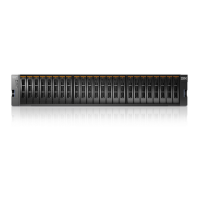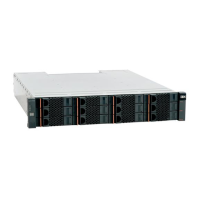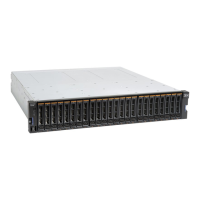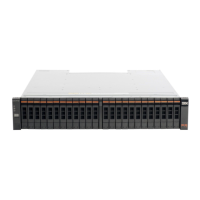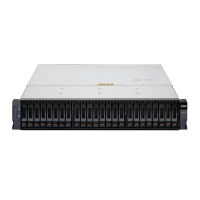510 Implementing the IBM Storwize V5000 Gen2 with IBM Spectrum Virtualize V8.1
However, there is a lock for each grain. The lock can be in shared or exclusive mode. For
multiple targets, a common lock is shared, and the mappings are derived from a particular
source volume. The lock is used in the following modes under the following conditions:
The lock is held in shared mode during a read from the target volume, which touches a
grain that was not copied from the source.
The lock is held in exclusive mode while a grain is being copied from the source to the
target.
If the lock is held in shared mode and another process wants to use the lock in shared mode,
this request is granted unless a process is already waiting to use the lock in exclusive mode.
If the lock is held in shared mode and it is requested to be exclusive, the requesting process
must wait until all holders of the shared lock free it.
Similarly, if the lock is held in exclusive mode, a process that is wanting to use the lock in
shared or exclusive mode must wait for it to be freed.
10.3.15 Event handling
When a FlashCopy mapping is not copying or stopping, the FlashCopy function does not
affect the handling or reporting of events for error conditions that are encountered in the I/O
path. Event handling and reporting are affected only by FlashCopy when a FlashCopy
mapping is copying or stopping; that is, actively moving data.
We describe these scenarios next.
Node failure
Normally, two copies of the FlashCopy bitmap are maintained. One copy of the FlashCopy
bitmap is on each of the two nodes that make up the I/O Group of the source volume. When a
node fails, one copy of the bitmap for all FlashCopy mappings whose source volume is a
member of the failing node’s I/O Group becomes inaccessible.
FlashCopy continues with a single copy of the FlashCopy bitmap that is stored as non-volatile
in the remaining node in the source I/O Group. The system metadata is updated to indicate
that the missing node no longer holds a current bitmap. When the failing node recovers or a
replacement node is added to the I/O Group, the bitmap redundancy is restored.
Path failure (Path Offline state)
In a fully functioning system, all of the nodes have a software representation of every volume
in the system within their application hierarchy.
Because the storage area network (SAN) that links IBM Storwize V5000 Gen2 system node
canisters to each other and to the MDisks is made up of many independent links, it is possible
for a subset of the nodes to be temporarily isolated from several of the MDisks. When this
situation happens, the managed disks are said to be
path offline on certain nodes.
Other nodes: Other nodes might see the managed disks as Online because their
connection to the managed disks is still functioning.
